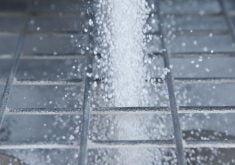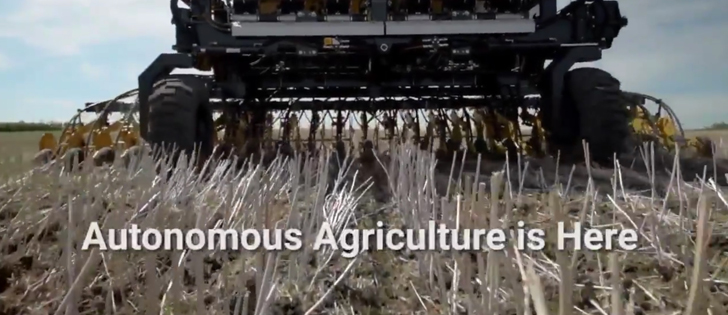There’s no room for hot air when talking about air cart servicing, says Clint Rousell of CNH’s Flexi-Coil
division in Saskatoon.
Rousell, who trains mechanics and farmers about CNH air seeding equipment, said too little attention is paid to seeding equipment “unless it fails us loudly.”
He told producers attending the Canola Council of Canada’s first-ever air drill diagnostics workshop April 19 that good agronomy is wasted if the seed and fertilizer aren’t properly placed in the soil.
A set of seeding tools costs $150,000 or more and Rousell said that investment should prompt producers to take a close look at each part of their seeding equipment, with special attention to the metering box.
Read Also

VIDEO: Ag in Motion documentary launches second season
The second season of the the Western Producer’s documentary series about Ag in Motion launched Oct. 8.
“It doesn’t matter what colour the machinery is, take a good walk around and service the machine as if your livelihood depends on it, because it does.”
Rousell said producers with New Holland SC180, 230, 380 and 430 and sister Flexi-Coil machines 1740, 2340, 3850 and 4350 should make it a spring practice to check and service their meter boxes to ensure proper metering and seed delivery through the manifold.
“This thing is the heart muscle of your seed drill. The rest of the machine is just there to deliver what this part sends out.”
Servicing begins with problems that might have started with cleaning before winter storage.
“Make certain that those transition caps on that eight-run manifold are still in place this spring. When you were blowing the machine clean with the compressed air last fall, you may have dislodged any you had in place.”
Producers should examine the baffle plate behind the meter box inspection cover inside the meter box to ensure it isn’t bent and that all the retainer swell-latches are in working order.
On mechanical-drive air cart models, moving forward with the drive engaged without starting the fan can cause seed to jam behind the meter roller and bend the baffle plate. This can allow air to leak across the barrier between the meter roller and the manifold.
The air leak and the damaged plate will combine to cause erratic seed rates and pressure loss.
Variable-rate models won’t engage the meter roller until the machine is moving at least one mph and operation hydraulic pressure is reached.
With the cover plate removed on the back of the meter roller housing, producers can inspect the wear strip plate that is below the meter roller. It should be flat, straight and show no signs of lifting from its base.
Using a fine roller, there should be a quarter-inch gap between the roller and the wear strip plate.
“You can easily measure that with a chunk of quarter-inch key-stock,” Rousell said.
Meter rollers on both systems are the same and bearings should be checked annually. Seed treatments and coatings tend to increase the need for inspections because the material becomes stuck between bearing surfaces.
“And remember those bearings in the middle of the rollers, not just the ones at the ends.”
Rousell said a grip wrench attached to the end of an unloaded meter roller shaft should require “about five pounds (of torque) to turn it. There is some natural drag built into the rollers. But it should be easy to turn without any grinding or great effort.”
The belts on fans that supply air to the tank should be snug but not tight. Belts that are too tight will add drag to the fans and reduce fan capacity while causing premature failure of bearings and bushings in the pumps and fans.
“Belts can give a little chirp when you hit the fan and that’s OK. You just don’t want them screaming at you,” Rousell said.
“Once you have all that pressure and something to do with it, check those hatch seals. They should be tight. After bouncing through the field for half an hour there should no dust patterns around those hatches.”
Small air leaks around the manifolds and in the distribution system aren’t a problem, but before this area they can seriously affect seed drill metering and performance.
Rousell said producers must ensure the fan motor case drain lines are connected to the tractor’s oil supply, preferably the reservoir.
“It needs an unrestricted drain to operate properly and to prevent burning out the motor,” he said.














